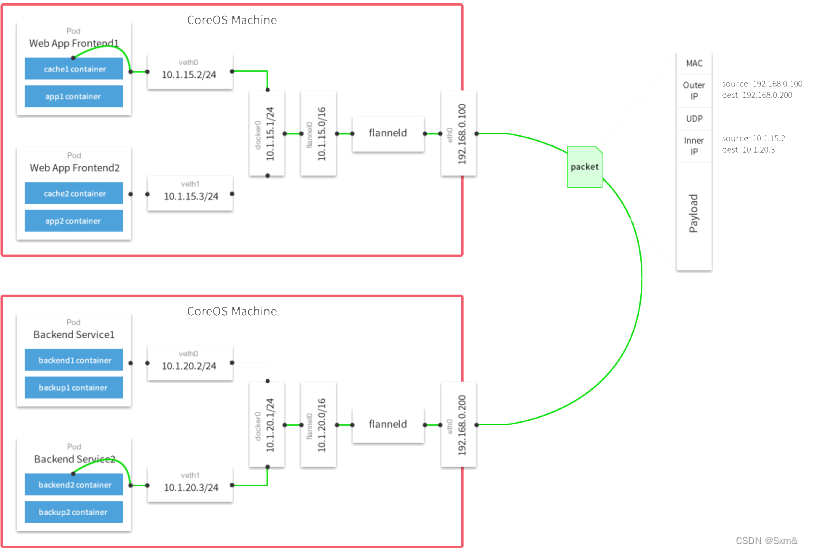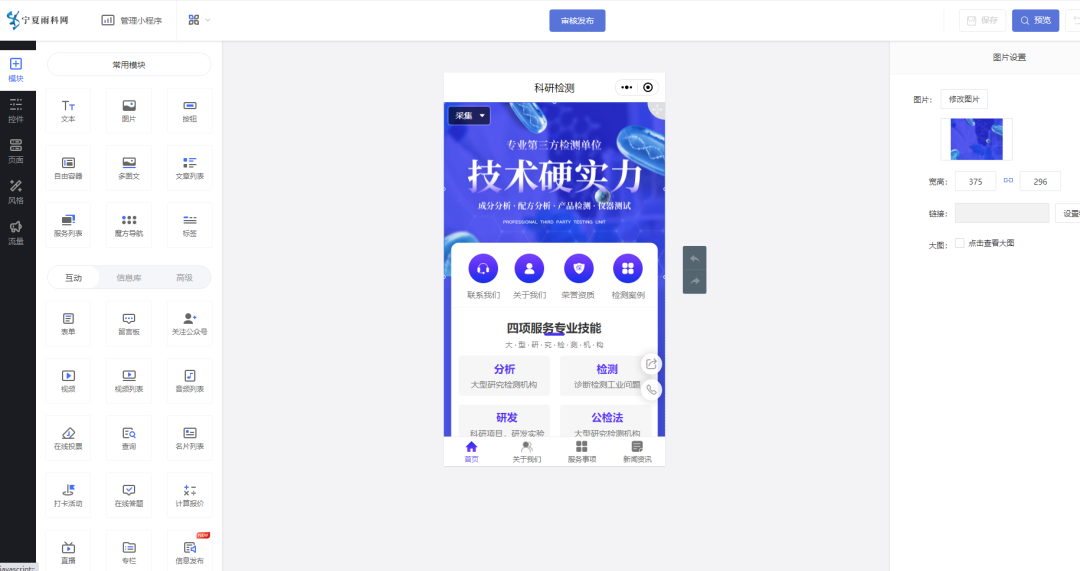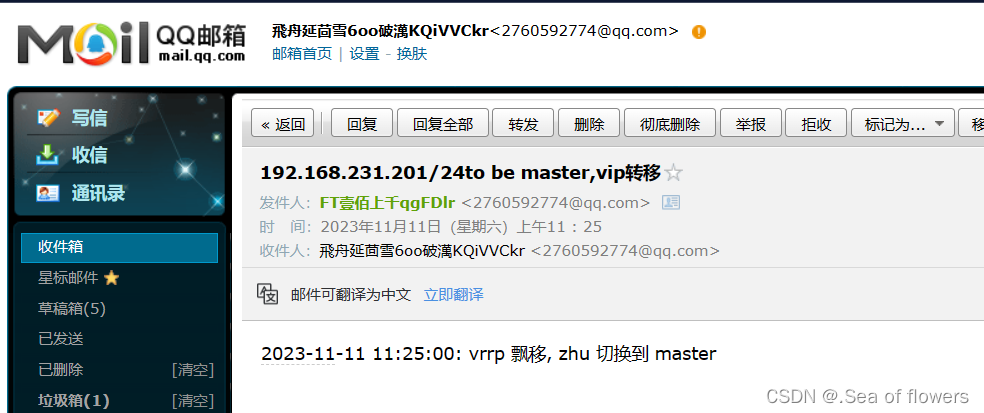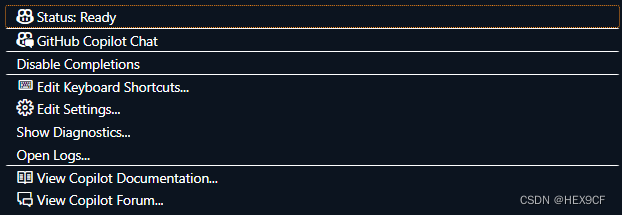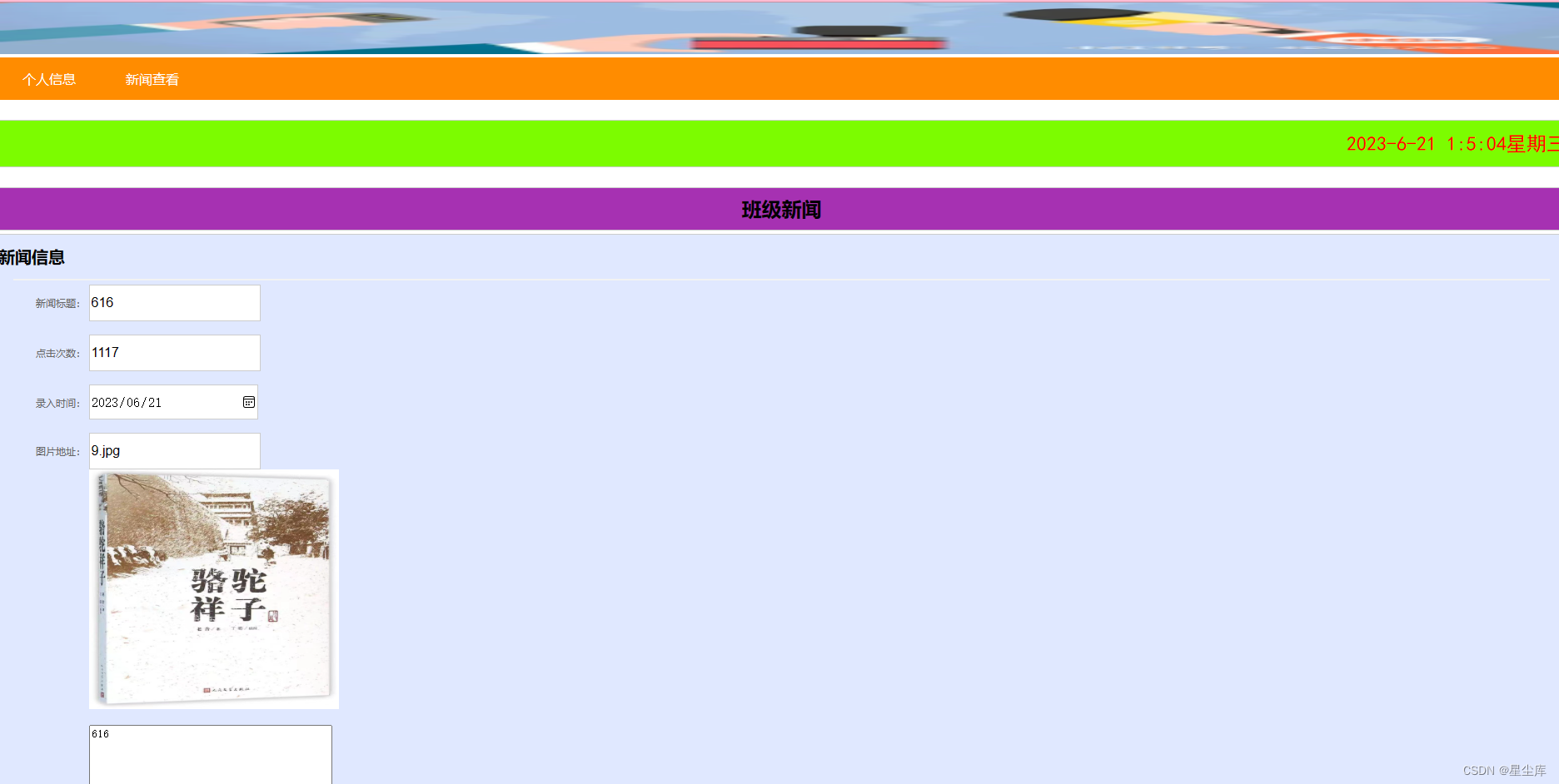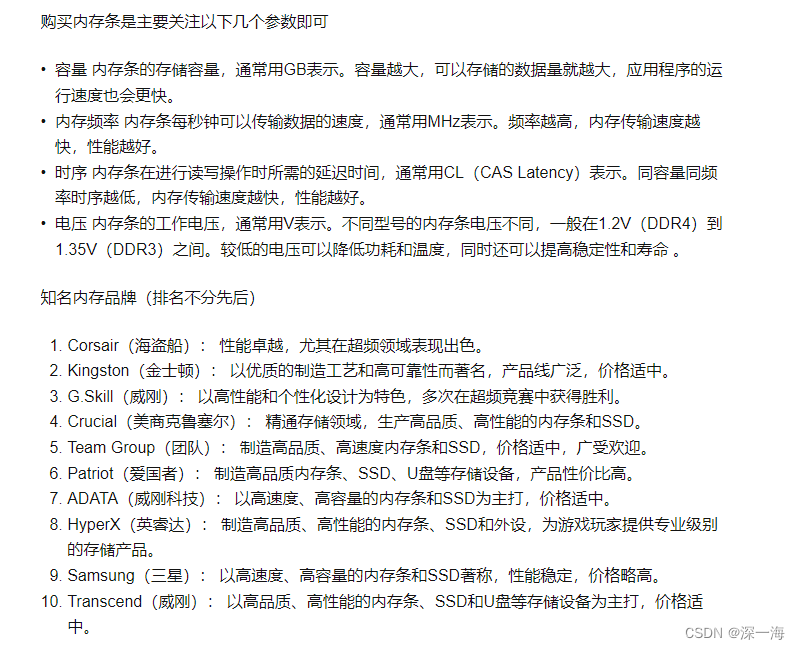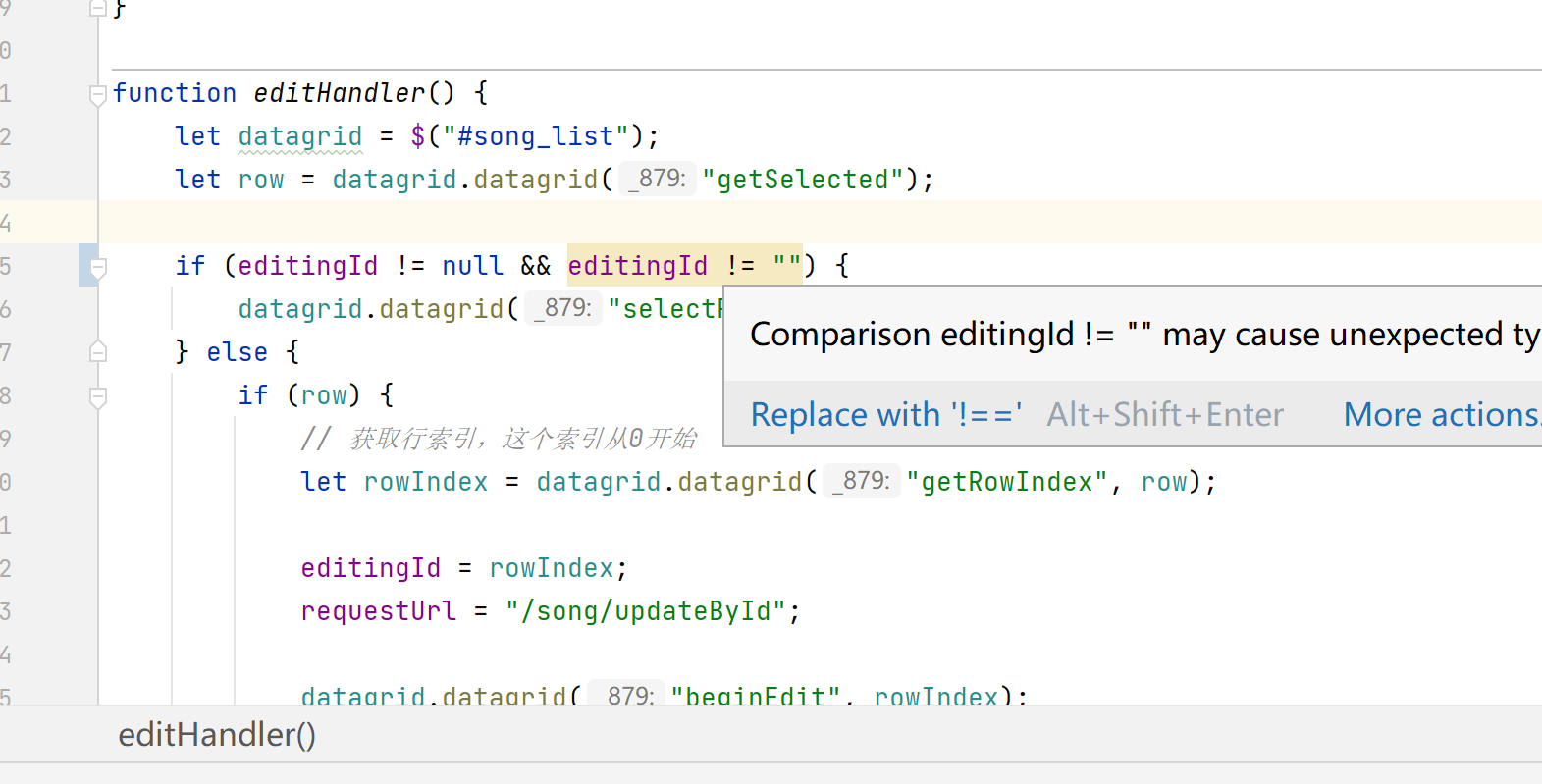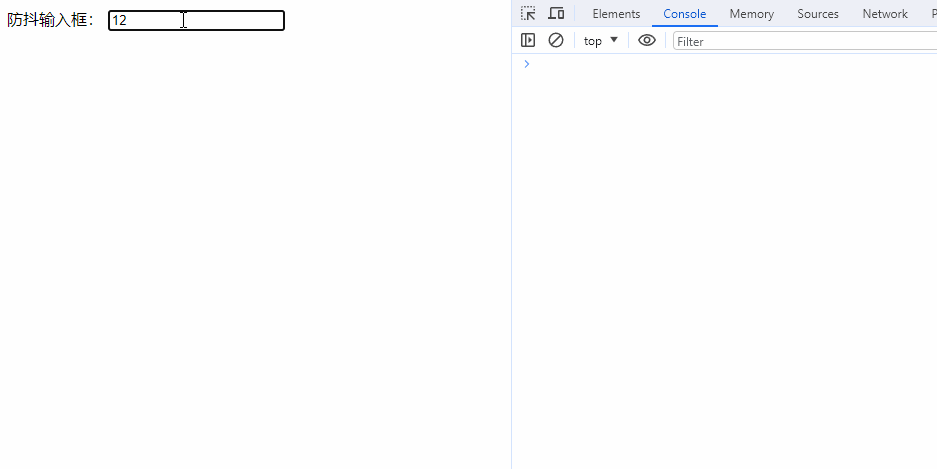多级缓存的实现离不开Nginx编程,而Nginx编程又离不开OpenResty。
1. OpenResty快速入门
我们希望达到的多级缓存架构如图:

其中:
-
windows上的nginx用来做反向代理服务,将前端的查询商品的ajax请求代理到OpenResty集群 -
OpenResty集群用来编写多级缓存业务
1.1. 反向代理流程
现在,商品详情页使用的是假的商品数据。不过在浏览器中,可以看到页面有发起ajax请求查询真实商品数据。
这个请求如下:

请求地址是localhost,端口是80,就被windows上安装的Nginx服务给接收到了。然后代理给了OpenResty集群:

我们需要在OpenResty中编写业务,查询商品数据并返回到浏览器。
但是这次,我们先在OpenResty接收请求,返回假的商品数据。
1.2. OpenResty监听请求
OpenResty的很多功能都依赖于其目录下的Lua库,需要在nginx.conf中指定依赖库的目录,并导入依赖:
1)添加对OpenResty的Lua模块的加载
修改/usr/local/openresty/nginx/conf/nginx.conf文件,在其中的http下面,添加下面代码:
#lua 模块
lua_package_path "/usr/local/openresty/lualib/?.lua;;";
#c模块
lua_package_cpath "/usr/local/openresty/lualib/?.so;;";
2)监听/api/item路径
修改/usr/local/openresty/nginx/conf/nginx.conf文件,在nginx.conf的server下面,添加对/api/item这个路径的监听:
location /api/item {# 默认的响应类型default_type application/json;# 响应结果由lua/item.lua文件来决定content_by_lua_file lua/item.lua;
}
这个监听,就类似于SpringMVC中的@GetMapping("/api/item")做路径映射。
而content_by_lua_file lua/item.lua则相当于调用item.lua这个文件,执行其中的业务,把结果返回给用户。相当于java中调用service。
1.3. 编写item.lua
1)在/usr/loca/openresty/nginx目录创建文件夹:lua

2)在/usr/loca/openresty/nginx/lua文件夹下,新建文件:item.lua

3)编写item.lua,返回假数据
item.lua中,利用ngx.say()函数返回数据到Response中
ngx.say('{"id":10001,"name":"SALSA AIR","title":"RIMOWA 21寸托运箱拉杆箱 SALSA AIR系列果绿色 820.70.36.4","price":17900,"image":"https://m.360buyimg.com/mobilecms/s720x720_jfs/t6934/364/1195375010/84676/e9f2c55f/597ece38N0ddcbc77.jpg!q70.jpg.webp","category":"拉杆箱","brand":"RIMOWA","spec":"","status":1,"createTime":"2019-04-30T16:00:00.000+00:00","updateTime":"2019-04-30T16:00:00.000+00:00","stock":2999,"sold":31290}')
4)重新加载配置
nginx -s reload
刷新商品页面:http://localhost/item.html?id=1001,即可看到效果:

2. 请求参数处理
我们在OpenResty接收前端请求,但是返回的是假数据。
要返回真实数据,必须根据前端传递来的商品id,查询商品信息才可以。
那么如何获取前端传递的商品参数呢?
2.1. 获取参数的API
OpenResty中提供了一些API用来获取不同类型的前端请求参数:

2.2. 获取参数并返回
在前端发起的ajax请求如图:

可以看到商品id是以路径占位符方式传递的,因此可以利用正则表达式匹配的方式来获取ID
1)获取商品id
修改/usr/loca/openresty/nginx/nginx.conf文件中监听/api/item的代码,利用正则表达式获取ID:
location ~ /api/item/(\d+) {# 默认的响应类型default_type application/json;# 响应结果由lua/item.lua文件来决定content_by_lua_file lua/item.lua;
}
2)拼接ID并返回
修改/usr/loca/openresty/nginx/lua/item.lua文件,获取id并拼接到结果中返回:
-- 获取商品id
local id = ngx.var[1]
-- 拼接并返回
ngx.say('{"id":' .. id .. ',"name":"SALSA AIR","title":"RIMOWA 21寸托运箱拉杆箱 SALSA AIR系列果绿色 820.70.36.4","price":17900,"image":"https://m.360buyimg.com/mobilecms/s720x720_jfs/t6934/364/1195375010/84676/e9f2c55f/597ece38N0ddcbc77.jpg!q70.jpg.webp","category":"拉杆箱","brand":"RIMOWA","spec":"","status":1,"createTime":"2019-04-30T16:00:00.000+00:00","updateTime":"2019-04-30T16:00:00.000+00:00","stock":2999,"sold":31290}')
3)重新加载并测试
运行命令以重新加载OpenResty配置:
nginx -s reload
刷新页面可以看到结果中已经带上了ID:

3. 查询Tomcat
拿到商品ID后,本应去缓存中查询商品信息,不过目前我们还未建立nginx、redis缓存。因此,这里我们先根据商品id去tomcat查询商品信息。我们实现如图部分:

需要注意的是,我们的OpenResty是在虚拟机,Tomcat是在Windows电脑上。两者IP一定不要搞错了。

3.1. 发送http请求的API
nginx提供了内部API用以发送http请求:
local resp = ngx.location.capture("/path",{method = ngx.HTTP_GET, -- 请求方式args = {a=1,b=2}, -- get方式传参数
})
返回的响应内容包括:
resp.status:响应状态码resp.header:响应头,是一个tableresp.body:响应体,就是响应数据
注意:这里的path是路径,并不包含IP和端口。这个请求会被nginx内部的server监听并处理。
但是我们希望这个请求发送到Tomcat服务器,所以还需要编写一个server来对这个路径做反向代理:
location /path {# 这里是windows电脑的ip和Java服务端口,需要确保windows防火墙处于关闭状态proxy_pass http://192.168.150.1:8081; }
原理如图:

3.2. 封装http工具
下面,我们封装一个发送Http请求的工具,基于ngx.location.capture来实现查询tomcat。
1)添加反向代理,到windows的Java服务
因为item-service中的接口都是/item开头,所以我们监听/item路径,代理到windows上的tomcat服务。
修改 /usr/local/openresty/nginx/conf/nginx.conf文件,添加一个location:
location /item {proxy_pass http://192.168.150.1:8081;
}
以后,只要我们调用ngx.location.capture("/item"),就一定能发送请求到windows的tomcat服务。
2)封装工具类
之前我们说过,OpenResty启动时会加载以下两个目录中的工具文件:

所以,自定义的http工具也需要放到这个目录下。
在/usr/local/openresty/lualib目录下,新建一个common.lua文件:
vi /usr/local/openresty/lualib/common.lua
内容如下:
-- 封装函数,发送http请求,并解析响应
local function read_http(path, params)local resp = ngx.location.capture(path,{method = ngx.HTTP_GET,args = params,})if not resp then-- 记录错误信息,返回404ngx.log(ngx.ERR, "http请求查询失败, path: ", path , ", args: ", args)ngx.exit(404)endreturn resp.body
end
-- 将方法导出
local _M = { read_http = read_http
}
return _M
这个工具将read_http函数封装到_M这个table类型的变量中,并且返回,这类似于导出。
使用的时候,可以利用require('common')来导入该函数库,这里的common是函数库的文件名。
3)实现商品查询
最后,我们修改/usr/local/openresty/lua/item.lua文件,利用刚刚封装的函数库实现对tomcat的查询:
-- 引入自定义common工具模块,返回值是common中返回的 _M
local common = require("common")
-- 从 common中获取read_http这个函数
local read_http = common.read_http
-- 获取路径参数
local id = ngx.var[1]
-- 根据id查询商品
local itemJSON = read_http("/item/".. id, nil)
-- 根据id查询商品库存
local itemStockJSON = read_http("/item/stock/".. id, nil)
这里查询到的结果是json字符串,并且包含商品、库存两个json字符串,页面最终需要的是把两个json拼接为一个json:

这就需要我们先把JSON变为lua的table,完成数据整合后,再转为JSON。
3.3. CJSON工具类
OpenResty提供了一个cjson的模块用来处理JSON的序列化和反序列化。
官方地址: https://github.com/openresty/lua-cjson/
1)引入cjson模块:
local cjson = require "cjson"
2)序列化:
local obj = {name = 'jack',age = 21
}
-- 把 table 序列化为 json
local json = cjson.encode(obj)
3)反序列化:
local json = '{"name": "jack", "age": 21}'
-- 反序列化 json为 table
local obj = cjson.decode(json);
print(obj.name)
3.4. 实现Tomcat查询
下面,我们修改之前的item.lua中的业务,添加json处理功能:
-- 导入common函数库
local common = require('common')
local read_http = common.read_http
-- 导入cjson库
local cjson = require('cjson')-- 获取路径参数
local id = ngx.var[1]
-- 根据id查询商品
local itemJSON = read_http("/item/".. id, nil)
-- 根据id查询商品库存
local itemStockJSON = read_http("/item/stock/".. id, nil)-- JSON转化为lua的table
local item = cjson.decode(itemJSON)
local stock = cjson.decode(stockJSON)-- 组合数据
item.stock = stock.stock
item.sold = stock.sold-- 把item序列化为json 返回结果
ngx.say(cjson.encode(item))
3.5. 基于ID负载均衡
刚才的代码中,我们的tomcat是单机部署。而实际开发中,tomcat一定是集群模式:

因此,OpenResty需要对tomcat集群做负载均衡。
而默认的负载均衡规则是轮询模式,当我们查询/item/10001时:
- 第一次会访问8081端口的
tomcat服务,在该服务内部就形成了JVM进程缓存 - 第二次会访问8082端口的
tomcat服务,该服务内部没有JVM缓存(因为JVM缓存无法共享),会查询数据库 - …
你看,因为轮询的原因,第一次查询8081形成的JVM缓存并未生效,直到下一次再次访问到8081时才可以生效,缓存命中率太低了。
怎么办?
如果能让同一个商品,每次查询时都访问同一个tomcat服务,那么JVM缓存就一定能生效了。
也就是说,我们需要根据商品id做负载均衡,而不是轮询。
1)原理
nginx提供了基于请求路径做负载均衡的算法:
nginx根据请求路径做hash运算,把得到的数值对tomcat服务的数量取余,余数是几,就访问第几个服务,实现负载均衡。
例如:
- 我们的请求路径是
/item/10001 tomcat总数为2台(8081、8082)- 对请求路径
/item/1001做hash运算求余的结果为1 - 则访问第一个
tomcat服务,也就是8081
只要id不变,每次hash运算结果也不会变,那就可以保证同一个商品,一直访问同一个tomcat服务,确保JVM缓存生效。
2)实现
修改/usr/local/openresty/nginx/conf/nginx.conf文件,实现基于ID做负载均衡。
首先,定义tomcat集群,并设置基于路径做负载均衡:
upstream tomcat-cluster {hash $request_uri;server 192.168.150.1:8081;server 192.168.150.1:8082;
}
然后,修改对tomcat服务的反向代理,目标指向tomcat集群:
location /item {proxy_pass http://tomcat-cluster;
}
重新加载OpenResty
nginx -s reload
3)测试
启动两台tomcat服务:

同时启动:

清空日志后,再次访问页面,可以看到不同id的商品,访问到了不同的tomcat服务:


4. Redis缓存预热
Redis缓存会面临冷启动问题:
冷启动:服务刚刚启动时,Redis中并没有缓存,如果所有商品数据都在第一次查询时添加缓存,可能会给数据库带来较大压力。
缓存预热:在实际开发中,我们可以利用大数据统计用户访问的热点数据,在项目启动时将这些热点数据提前查询并保存到Redis中。
我们数据量较少,并且没有数据统计相关功能,目前可以在启动时将所有数据都放入缓存中。
1)利用Docker安装Redis
docker run --name redis -p 6379:6379 -d redis redis-server --appendonly yes
2)在item-service服务中引入Redis依赖
<dependency><groupId>org.springframework.boot</groupId><artifactId>spring-boot-starter-data-redis</artifactId>
</dependency>
3)配置Redis地址
spring:redis:host: 192.168.150.101
4)编写初始化类
缓存预热需要在项目启动时完成,并且必须是拿到RedisTemplate之后。
这里我们利用InitializingBean接口来实现,因为InitializingBean可以在对象被Spring创建并且成员变量全部注入后执行。
package com.dcxuexi.item.config;import com.fasterxml.jackson.core.JsonProcessingException;
import com.fasterxml.jackson.databind.ObjectMapper;
import com.dcxuexi.item.pojo.Item;
import com.dcxuexi.item.pojo.ItemStock;
import com.dcxuexi.item.service.IItemService;
import com.dcxuexi.item.service.IItemStockService;
import org.springframework.beans.factory.InitializingBean;
import org.springframework.beans.factory.annotation.Autowired;
import org.springframework.data.redis.core.StringRedisTemplate;
import org.springframework.stereotype.Component;import java.util.List;@Component
public class RedisHandler implements InitializingBean {@Autowiredprivate StringRedisTemplate redisTemplate;@Autowiredprivate IItemService itemService;@Autowiredprivate IItemStockService stockService;private static final ObjectMapper MAPPER = new ObjectMapper();@Overridepublic void afterPropertiesSet() throws Exception {// 初始化缓存// 1.查询商品信息List<Item> itemList = itemService.list();// 2.放入缓存for (Item item : itemList) {// 2.1.item序列化为JSONString json = MAPPER.writeValueAsString(item);// 2.2.存入redisredisTemplate.opsForValue().set("item:id:" + item.getId(), json);}// 3.查询商品库存信息List<ItemStock> stockList = stockService.list();// 4.放入缓存for (ItemStock stock : stockList) {// 2.1.item序列化为JSONString json = MAPPER.writeValueAsString(stock);// 2.2.存入redisredisTemplate.opsForValue().set("item:stock:id:" + stock.getId(), json);}}
}
5. 查询Redis缓存
现在,Redis缓存已经准备就绪,我们可以再OpenResty中实现查询Redis的逻辑了。如下图红框所示:

当请求进入OpenResty之后:
- 优先查询
Redis缓存 - 如果
Redis缓存未命中,再查询Tomcat
5.1. 封装Redis工具
OpenResty提供了操作Redis的模块,我们只要引入该模块就能直接使用。但是为了方便,我们将Redis操作封装到之前的common.lua工具库中。
修改/usr/local/openresty/lualib/common.lua文件:
1)引入Redis模块,并初始化Redis对象
-- 导入redis
local redis = require('resty.redis')
-- 初始化redis
local red = redis:new()
red:set_timeouts(1000, 1000, 1000)
2)封装函数,用来释放Redis连接,其实是放入连接池
-- 关闭redis连接的工具方法,其实是放入连接池
local function close_redis(red)local pool_max_idle_time = 10000 -- 连接的空闲时间,单位是毫秒local pool_size = 100 --连接池大小local ok, err = red:set_keepalive(pool_max_idle_time, pool_size)if not ok thenngx.log(ngx.ERR, "放入redis连接池失败: ", err)end
end
3)封装函数,根据key查询Redis数据
-- 查询redis的方法 ip和port是redis地址,key是查询的key
local function read_redis(ip, port, key)-- 获取一个连接local ok, err = red:connect(ip, port)if not ok thenngx.log(ngx.ERR, "连接redis失败 : ", err)return nilend-- 查询redislocal resp, err = red:get(key)-- 查询失败处理if not resp thenngx.log(ngx.ERR, "查询Redis失败: ", err, ", key = " , key)end--得到的数据为空处理if resp == ngx.null thenresp = nilngx.log(ngx.ERR, "查询Redis数据为空, key = ", key)endclose_redis(red)return resp
end
4)导出
-- 将方法导出
local _M = { read_http = read_http,read_redis = read_redis
}
return _M
完整的common.lua:
-- 导入redis
local redis = require('resty.redis')
-- 初始化redis
local red = redis:new()
red:set_timeouts(1000, 1000, 1000)-- 关闭redis连接的工具方法,其实是放入连接池
local function close_redis(red)local pool_max_idle_time = 10000 -- 连接的空闲时间,单位是毫秒local pool_size = 100 --连接池大小local ok, err = red:set_keepalive(pool_max_idle_time, pool_size)if not ok thenngx.log(ngx.ERR, "放入redis连接池失败: ", err)end
end-- 查询redis的方法 ip和port是redis地址,key是查询的key
local function read_redis(ip, port, key)-- 获取一个连接local ok, err = red:connect(ip, port)if not ok thenngx.log(ngx.ERR, "连接redis失败 : ", err)return nilend-- 查询redislocal resp, err = red:get(key)-- 查询失败处理if not resp thenngx.log(ngx.ERR, "查询Redis失败: ", err, ", key = " , key)end--得到的数据为空处理if resp == ngx.null thenresp = nilngx.log(ngx.ERR, "查询Redis数据为空, key = ", key)endclose_redis(red)return resp
end-- 封装函数,发送http请求,并解析响应
local function read_http(path, params)local resp = ngx.location.capture(path,{method = ngx.HTTP_GET,args = params,})if not resp then-- 记录错误信息,返回404ngx.log(ngx.ERR, "http查询失败, path: ", path , ", args: ", args)ngx.exit(404)endreturn resp.body
end
-- 将方法导出
local _M = { read_http = read_http,read_redis = read_redis
}
return _M
5.2. 实现Redis查询
接下来,我们就可以去修改item.lua文件,实现对Redis的查询了。
查询逻辑是:
- 根据
id查询Redis - 如果查询失败则继续查询
Tomcat - 将查询结果返回
1)修改/usr/local/openresty/lua/item.lua文件,添加一个查询函数:
-- 导入common函数库
local common = require('common')
local read_http = common.read_http
local read_redis = common.read_redis
-- 封装查询函数
function read_data(key, path, params)-- 查询本地缓存local val = read_redis("127.0.0.1", 6379, key)-- 判断查询结果if not val thenngx.log(ngx.ERR, "redis查询失败,尝试查询http, key: ", key)-- redis查询失败,去查询httpval = read_http(path, params)end-- 返回数据return val
end
2)而后修改商品查询、库存查询的业务:

3)完整的item.lua代码:
-- 导入common函数库
local common = require('common')
local read_http = common.read_http
local read_redis = common.read_redis
-- 导入cjson库
local cjson = require('cjson')-- 封装查询函数
function read_data(key, path, params)-- 查询本地缓存local val = read_redis("127.0.0.1", 6379, key)-- 判断查询结果if not val thenngx.log(ngx.ERR, "redis查询失败,尝试查询http, key: ", key)-- redis查询失败,去查询httpval = read_http(path, params)end-- 返回数据return val
end-- 获取路径参数
local id = ngx.var[1]-- 查询商品信息
local itemJSON = read_data("item:id:" .. id, "/item/" .. id, nil)
-- 查询库存信息
local stockJSON = read_data("item:stock:id:" .. id, "/item/stock/" .. id, nil)-- JSON转化为lua的table
local item = cjson.decode(itemJSON)
local stock = cjson.decode(stockJSON)
-- 组合数据
item.stock = stock.stock
item.sold = stock.sold-- 把item序列化为json 返回结果
ngx.say(cjson.encode(item))
6. Nginx本地缓存
现在,整个多级缓存中只差最后一环,也就是nginx的本地缓存了。如图:
6.1. 本地缓存API
OpenResty为Nginx提供了 shard dict 的功能,可以在nginx的多个worker之间共享数据,实现缓存功能。
1)开启共享字典,在nginx.conf的http下添加配置:
# 共享字典,也就是本地缓存,名称叫做:item_cache,大小150mlua_shared_dict item_cache 150m;
2)操作共享字典:
-- 获取本地缓存对象
local item_cache = ngx.shared.item_cache
-- 存储, 指定key、value、过期时间,单位s,默认为0代表永不过期
item_cache:set('key', 'value', 1000)
-- 读取
local val = item_cache:get('key')
6.2. 实现本地缓存查询
1)修改/usr/local/openresty/lua/item.lua文件,修改read_data查询函数,添加本地缓存逻辑:
-- 导入共享词典,本地缓存
local item_cache = ngx.shared.item_cache-- 封装查询函数
function read_data(key, expire, path, params)-- 查询本地缓存local val = item_cache:get(key)if not val thenngx.log(ngx.ERR, "本地缓存查询失败,尝试查询Redis, key: ", key)-- 查询redisval = read_redis("127.0.0.1", 6379, key)-- 判断查询结果if not val thenngx.log(ngx.ERR, "redis查询失败,尝试查询http, key: ", key)-- redis查询失败,去查询httpval = read_http(path, params)endend-- 查询成功,把数据写入本地缓存item_cache:set(key, val, expire)-- 返回数据return val
end
2)修改item.lua中查询商品和库存的业务,实现最新的read_data函数:

其实就是多了缓存时间参数,过期后nginx缓存会自动删除,下次访问即可更新缓存。
这里给商品基本信息设置超时时间为30分钟,库存为1分钟。
因为库存更新频率较高,如果缓存时间过长,可能与数据库差异较大。
3)完整的item.lua文件:
-- 导入common函数库
local common = require('common')
local read_http = common.read_http
local read_redis = common.read_redis
-- 导入cjson库
local cjson = require('cjson')
-- 导入共享词典,本地缓存
local item_cache = ngx.shared.item_cache-- 封装查询函数
function read_data(key, expire, path, params)-- 查询本地缓存local val = item_cache:get(key)if not val thenngx.log(ngx.ERR, "本地缓存查询失败,尝试查询Redis, key: ", key)-- 查询redisval = read_redis("127.0.0.1", 6379, key)-- 判断查询结果if not val thenngx.log(ngx.ERR, "redis查询失败,尝试查询http, key: ", key)-- redis查询失败,去查询httpval = read_http(path, params)endend-- 查询成功,把数据写入本地缓存item_cache:set(key, val, expire)-- 返回数据return val
end-- 获取路径参数
local id = ngx.var[1]-- 查询商品信息
local itemJSON = read_data("item:id:" .. id, 1800, "/item/" .. id, nil)
-- 查询库存信息
local stockJSON = read_data("item:stock:id:" .. id, 60, "/item/stock/" .. id, nil)-- JSON转化为lua的table
local item = cjson.decode(itemJSON)
local stock = cjson.decode(stockJSON)
-- 组合数据
item.stock = stock.stock
item.sold = stock.sold-- 把item序列化为json 返回结果
ngx.say(cjson.encode(item))
